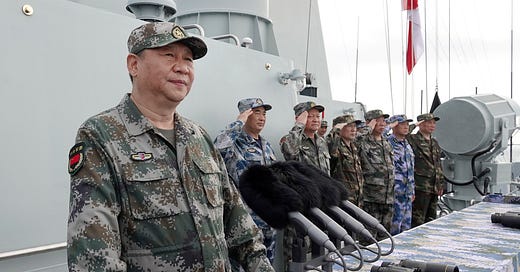The Chinese People’s Liberation Army’s High-Risk Plan to Invade Taiwan.
Internal documents of the People's Liberation Army detail an operation scenario leading to the conquest of the island with heavy losses.
The People's Liberation Army in China is obsessed with a plan it trains on daily: “The Joint Island Attack Campaign,” designed to take Taiwan. This “highly centralized plan is updated regularly,” suggesting that the invasion envisioned by the Chinese Communist Party is “inevitable,” says Ian Easton.
This American expert from the Project 2049 Institute in…
Keep reading with a 7-day free trial
Subscribe to Sylvain Saurel’s Newsletter to keep reading this post and get 7 days of free access to the full post archives.




